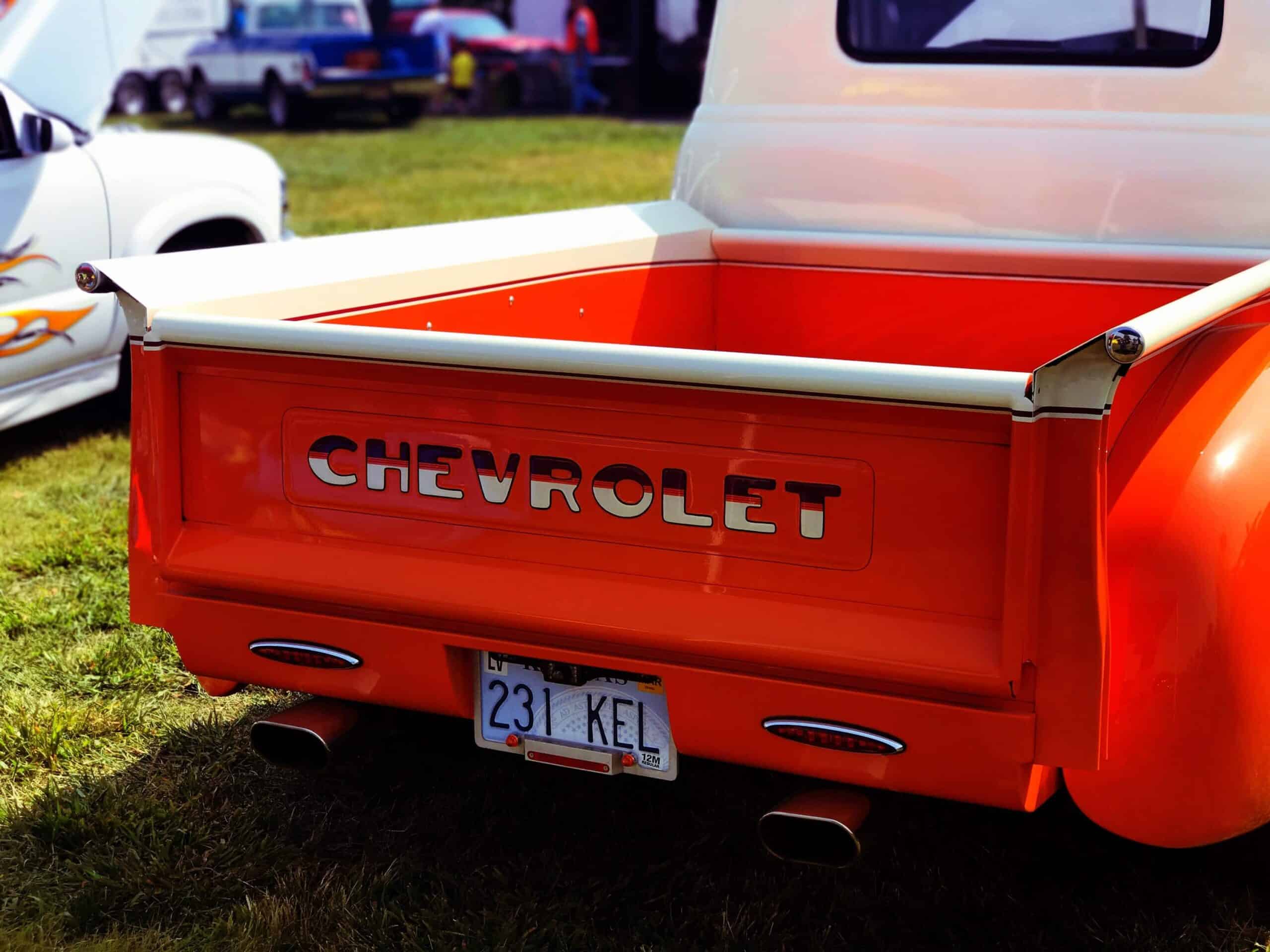
The 4L80E transmission is an automatic transmission designed by General Motors. Learn more about this legendary transmission.
The 4L80E transmission was introduced in the GM C/K Trucks line-up – to the delight of motorists – in 1991. The legendary TurboHydramatic TH400 automatic transmission was the 4L80E transmission’s immediate predecessor. It is constructed to a great extent on the 400 in strength and parts. The 4L80E also features a lock-up torque converter, an added overdrive gear, as well as state-of-the-art electronic controls. This automatic transmission has remained in production through the 2009+ model year.
In this post, you will learn more about the 4L80E transmission and its variant, i.e., the 4L85E. The latter is constructed such that it can efficiently handle heavy-duty use. Every reference to the 4L80E also applies to this variant, except where stated otherwise.
Note that the terms’ 4L80′ and ‘4L85’ may be used without adding the suffix, ‘É.’ This is because every GM automatic is electronically controlled now and, therefore, doesn’t need differentiation.
Let’s get to the meat of the matter.
The Development of the 4L80E Transmission
As mentioned briefly earlier, the 4L80E automatic transmission was directly developed from the TH400 transmission. The latter is a challenging and enduring transmission at GM – as well as other marques. It was practically the last hold-out of the entire old-school automatics with no overdrive or lock-up converter.
GM quickly recognized a gap revealed by the rapidly expanding success of the 4L80E/700R4 automatic transmission. Although the 700R4 was a tough transmission, it could not hold a candle to the TH400 transmission.
And for this particular reason, GM had no choice but to start developing a pretty heavy-duty automatic overdrive.
GM relied heavily on – and used – several parts or components and designs derived from the TH400 transmission when developing the 4L80E. But the added overdrive gear gave the 4L80E an edge over its predecessor, even though it required a somewhat longer case and an extra gear set.
The rear tail housing bolt pattern was not tampered with in any way. However, its indexing bore diameter was efficiently changed. The 4L80E transmission features a large 32 spline output shaft – much like the TH400 transmission – in the numerous 2WD and 4WD applications.
The 4L80E features a die-cast aluminum case, just like most other GM automatics. However, the 4L80E never featured a removable bell housing, unlike the 4L60E automatic transmission. Instead, the 4L80E transmission showcases an integrated bellhousing with the Chevrolet 90-degree engine bolt pattern only.
In 1991, GM trucks rolled out into the market, bearing the 4L80E automatic transmission. This included the Silverado, Sierra, Suburban, Hummer H1, etc.
The 4L80E automatic transmission is by no means perfect and has its share of glitches. However, it became a huge success and continued to be enhanced throughout its production span, even with extra changes entering when required.
In 2002, the 4L85 automatic transmission entered the market. A few differences between this transmission and the 4L80E include a 5-pinion reaction gearset, a 5-pinion output gearset, etc.
GM specified a brand-new automatic transmission fluid formulation in 2006, though this development was not regarded as a transmission change. The company required this fluid formulation’s warranty in the 4L80E series. Dexron VI, another brand, highly superseded its previous transmission fluids, claiming that it has significantly improved the transmission performance as well as a more extraordinary fluid life and transmission.
The 4L80E Automatic Transmission Technology
Every 4L80E automatic transmission makes use of electronic controls, which are generally from the Powertrain Control Module. Some vehicles using this automatic transmission come with shift maps that the driver can select, based on usage, including towing, etc.
Part of the Powertrain Control Module’s strategy includes shift stabilization, which contributes significantly to reducing hunting.
The torque converter – when applied in factories – is heavily controlled via a PWM lock-up solenoid for seamless lock-up action. Despite this, several performance aficionados always prefer to efficiently reprogram the 4L80E automatic transmission in order to run as a very simple, ON-OFF solenoid.
The H1 received a 4L80 along with its dedicated T42 transmission computer in 2004. This automatic transmission also arrived with a considerably enhanced Park/Neutral safety switch and modified transmission line pressure solenoid. Other General Motors applications are still going to follow soon.
The TCM (Transmission Control Module) refers to the highly adaptive learning computer smartly integrated within the transmission valve body. It communicates efficiently with the Engine Control Module through the onboard vehicle CAN bus network.
This is a departure from – and a return to – preceding automotive control systems within the industry. This is because the earlier versions of electronic transmissions made use of a separate control module. This module was later integrated right into the Engine Control Module and is now known as the ‘Power Control Modules.’
But now, this high-speed CAN network permits an incredibly high rate of data sharing between these units. This occurs in order to reach a collaboration between transmission and engine functions.
Since the 4L80E automatic transmissions are – on certain occasions – used in conversion applications with the earlier non-PCM-controlled engines, GM as well as aftermarket control modules are necessary. And they are now used to control the operation or function of the transmission in these specific scenarios.
The Specifications
When you see the nomenclature of the 4L80E, it readily informs users that this is a longitudinally-mounted, 4-speed transmission designed for vehicles that weigh nothing less than 8000 lbs. The 4L80E has an RPO code – i.e. ‘MT1’ – manufactured domestically in GM’s Willow Run and Ypsilanti plants.
Here are the 4L80E ratios it features in each gear:
- First: 2.48
- Second: 1.48
- Third: 1.00
- Fourth: 075
- Reverse 2.07
The maximum output torque of the 4L80E transmission is 885 ft. lbs.
While the top engine input torque is 440 ft. lbs. Die-cast aluminum is the transmission’s case. And it was designed for vehicles that weigh up to 8,000 lbs. GVWR as well as with engines up to 440 ft. lbs. of torque.
However, the 4L85 was primarily designed for automobiles that weigh up to 16,500 lbs. GVWR as well as with engines up to 460 ft. lbs. of torque. This transmission has an incredible towing capacity as it was up-rated to 22,000 lbs.
The 4L80E series requires a shifter with a 7-position quadrant: P, R, N, OD, D, 2, 1. The torque converter on this automatic transmission is a fluid turbine drive, much like those found on its predecessors, e.g., the 700R4, 4L60, TH350C.
The 4L80E also comes with a lock-up pressure plate for direct, mechanically-coupled driving from the engine crank. It is 26¼ inches long and boasts a 310mm torque converter.
Applications of the Transmission
The 4L80E automatic transmission has several applications, such as:
- Speed-sensing
- Transfer case adaptability
- Jeep conversions
- Engine compatibility
Final Thoughts
By now, you already know that the 4L80E automatic transmission is intelligently designed to meet transmission challenges. This implemented automatic transmission from the legendary General Motors has an extraordinary record in conversion situations and will always leave you super-impressed.

